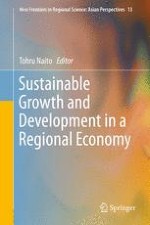2016 | OriginalPaper | Chapter
10. The Network Analysis of Transportation
Author : Akio Kawasaki
Published in: Sustainable Growth and Development in a Regional Economy
Publisher: Springer Japan
Activate our intelligent search to find suitable subject content or patents.
Select sections of text to find matching patents with Artificial Intelligence. powered by
Select sections of text to find additional relevant content using AI-assisted search. powered by
